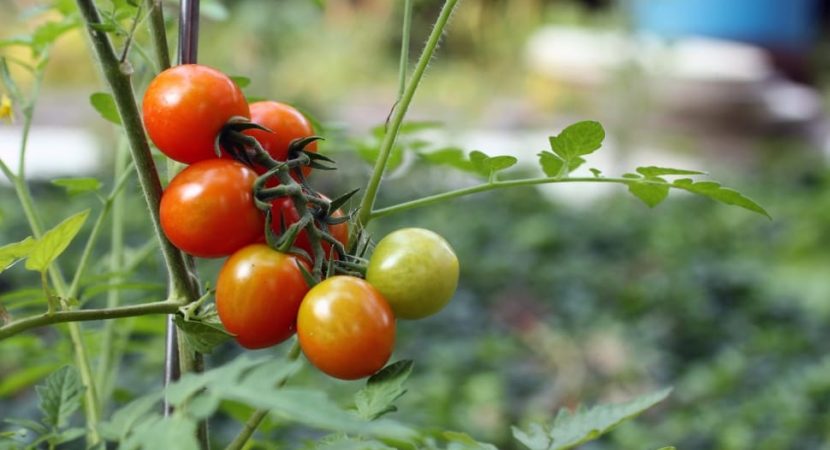Last Updated on
Ever wondered how to grow a bumper crop of tomatoes without chemical fertilizers? To grow tomatoes, soil needs nutrients such as nitrogen, phosphorous and potassium. Chemical fertilizers do contain these nutrients – but they’re chemically manufactured from inorganic material. The soil absorbs them more rapidly than your plants. The end result is potentially polluted ground water sources, and nutrient deficient tomato plants.
To avoid this, you’ll need to the best ways to grow your tomatoes without the help of fertilizers.
The Benefits of Organic Tomato Fertilizers
Organic tomato fertilizer puts carbon and trace minerals in the soil that feeds root bacteria and microbes, delivering nutrition direct to your tomato plant. This helps the plant grow faster, improving its overall health. Combine this with 6 to 12 hours of daily sunlight, high temperatures and plenty of water, and you’ll enjoy deliciously fresh, healthy tomatoes.
So how do you start?
Plant After The Last Frosts
Tomatoes love the sun but will die at the first hint of frost. So before planting, make sure that the last frost date for your particular region has passed. If you’re planting from seed, you’ll need to get them started six to eight weeks before the last frost date in your area. For better fruit, it’s recommended to grow from seedlings. If you do plant your seedlings too early, and frost is forecast, cover them with cloches or newspaper cones.
Choose The Right Location
It’s important to select a spot in your garden that enjoys sun all day long. If sunlight can reach your entire tomato plant, you’ll have better, quicker growth. If you don’t have much space, make sure your garden bed is either deep or raised. Use wooden stakes to train the tomatoes vertically as they grow. For larger gardens with deep, loose soil, you can get away with rows spaced widely apart, three feet by three feet.
Use Organic Fertilizers When Planting
Tomatoes need nitrogen early on in the season to boost growth. However, too much nitrogen can lead to excessive, disease-prone foliage, and not enough fruit. Use a 5 cm layer of either organic fertilizer, your own garden compost, or composted dairy cow, sheep or poultry manure. Sheep manure can be useful as it provides those key nutrients – phosphorous, nitrogen and potassium. Mix thoroughly into the soil using a hoe. If you’ve recently moved to a new garden, adding organic fertilizers such as these for the first two to three years will help produce fertile soil that’s perfect for growing tomatoes.
Add Your Tomato Plants
Make sure the soil has warmed up to at least 10 C° for planting. Turn the pot upside down and carefully remove the tomato plant by gently squeezing the root ball. When planting your seedlings, you can put them deep enough into the ground so that soil level is just above the first set of leaves on the stem. Tomatoes benefit from being planted deeper into the soil. Their roots will form along the stem touching the soil, anchoring the plant more firmly.
Caring For Your Tomatoes
Growing tomato plants need regular watering. For the first two weeks after planting, ensure you overhead water them every day or every other day. After three weeks, hold back on the watering. This will ensure that the plants sink their roots deeper to find water, drawing up more nutrients so that they are more resistant to pests.
Then give your plants a good soak every few days. Once your tomatoes start flowering and fruiting, remember to water them every other day until you’re ready to harvest.


Reply